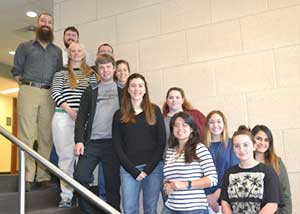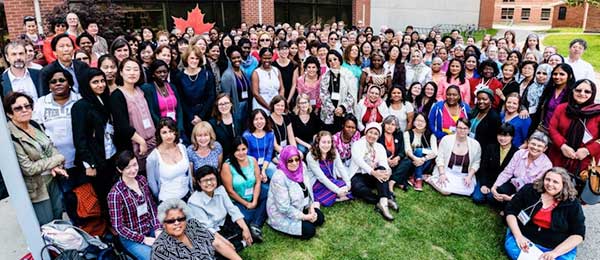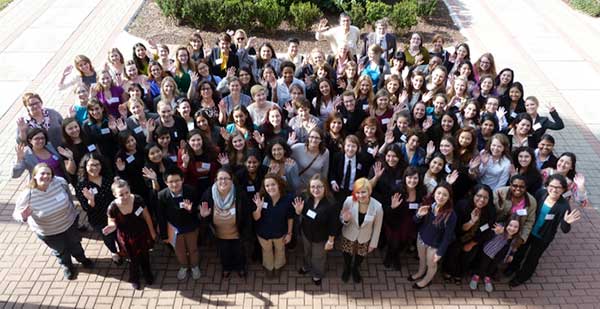The Growth of Nuclear Daughters
Sherry J Yennello, Texas A&M University
Often people think of radioactivity as the disappearance of a nucleus through decay, but equally true is the appearance of a new nucleus — the daughter. In the same way that a relatively pure sample of Uranium develops over time to have many different components, the relatively homogeneous field of physics that Marie Curie lived in has transformed in the last 150 years to have much greater representation. The birth of daughters enables the transformation of a field from being very male dominated to having more diverse representation.
Marie Curie has given us nuclear daughters in multiple senses of the word. By her discovery of radioactive decay she showed us the first daughter nuclei. Marie also gave birth to Irene, who was both biologically and scientifically a nuclear daughter. But Marie’s early accomplishments also paved the way for many other women to become nuclear scientists. A picture from the nuclear chemistry Gordon conference from 1966 shows vividly how the field was virtually all men just 50 years ago. So there was not much progress in the first 100 years.

Figure 1 Nuclear Chemistry Gordon Conference 1966.
In contrast a picture of the author’s research group today is overwhelmingly female.
In 2015 white women made up 31% of the population and 18% of the employed scientists and engineers — so the glass is half full. If one looks specifically at physics women make up 20% of the graduate student population. We have come a long way since the days of Marie — even if we got a slow start.

Figure 2 SJY research group 2017.
There are now a number of programs with the intention to increase women either in STEM or specifically in physics. The NSF signature program for increasing women in STEM faculty positions is ADVANCE. (https://www.nsf.gov/funding/pgm_summ.jsp?pims_id=5383) The National Science Foundation ADVANCE program began in 2001, and has awarded 300 grants to over 200 institutions. The goal of the ADVANCE program is to develop systemic approaches to increase the representation and advancement of women in academic science and engineering careers, thereby contributing to the development of a more diverse science and engineering workforce. Under the Obama administration there was a White House Council on Women and Girls. The office was tasked with reviewing policy proposals to ensure gender equality, sponsoring public forums on women’s issues and coordinating with outside groups among federal agencies.
There has been a series of international conferences on women in physics sponsored by the International Union of Pure and Applied Physics (IUPAP) and there is an IUPAP working group on women. (http://iupap.org/working-groups/wg5-women-in-physics/)

Figure 3 5th International Conference on Women in Physics.
Within the APS there is a committee on the status of women in physics (http://www.aps.org/programs/women/index.cfm) that sponsors a number of programs to promote women, from Gender EQUITY site visits to professional development workshops. In 2006 a group of senior women hosted the first conference for undergraduate women in physics. This effort grew rapidly and in 2018 there will be a dozen concurrent conferences throughout the country.
While the field of physics has gotten a slow start at diversifying, and the glass is now half full, we have come a long way and I’m sure Marie is smiling down upon us.

Figure 4 Conference for Undergraduate Women in Physics: Brownsville, TX, 2015.
These contributions have not been peer-refereed. They represent solely the view(s) of the author(s) and not necessarily the view of APS.
